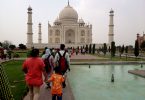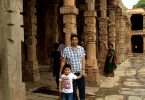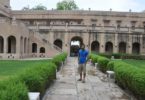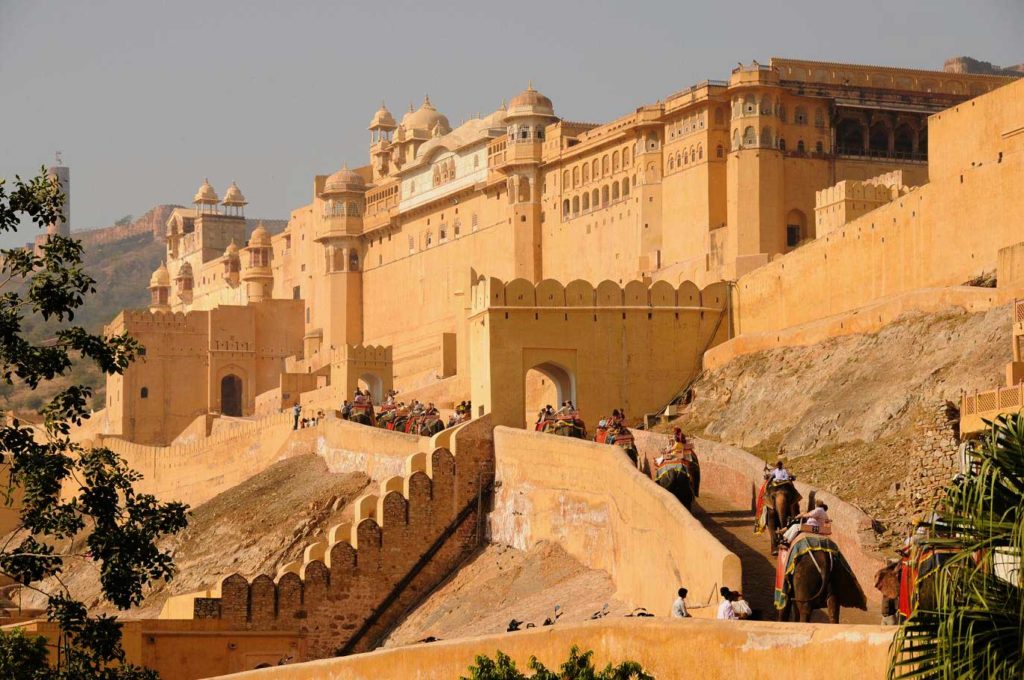 The Amber Fort is a typical example and symbol of brave Rajputs who were: engaged, adventurous, temperamental and self-indulgent.
The Amber Fort is a typical example and symbol of brave Rajputs who were: engaged, adventurous, temperamental and self-indulgent.
Amber Fort is one of the best forts on mountains or hilltops all over India. On the outskirts of the complex, on the steep hills come doors, imposing temples, huge ornate halls, palaces, pavilions, gardens and even a ramp that takes you to the top of the palace hill where to climb by it, Elephant, … yes beautifully harnessed elephants that go up and down the visitors to the top of the Fort.
These well-dressed elephants take us on a leisurely trip to the Amber Fort and in turn make the way to the Amber Fort a fascinating experience and something you can not miss on a trip through Rajasthan … I have to say anyway That I had to give a shout to the person wearing the elegant because it was not necessary so much to stick the animal, effectively, rose the same without having to do so.
HISTORY
Just 11 kilometers from Jaipur, Amber Fort is a fort built in a splendid and picturesque place. Being a perfect blend of Hindu and Muslim architecture, Jaipur and Amber Fort attract travelers from all over the world.
Built in the 16th century by Raja Man Singh, the fort is the pride of the exotic construction skills of the artisans of yesteryear in this area of India. The fortress retains a legacy from the time when the rulers imagined the craft in a way that had no comparison.
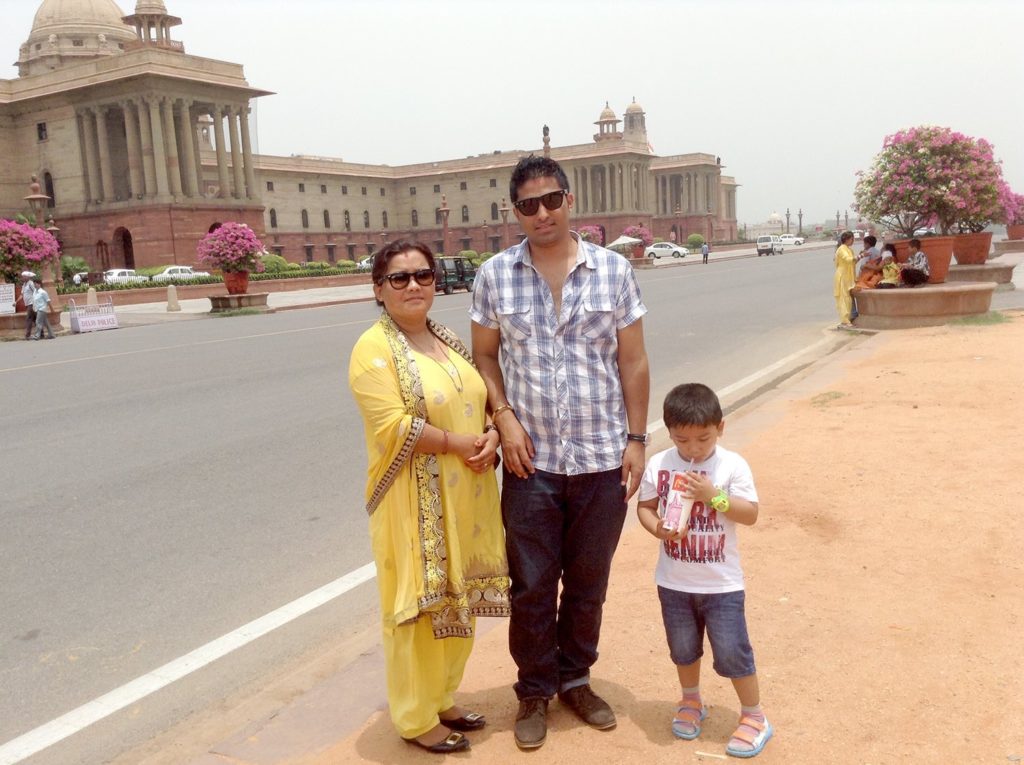
THINGS TO SEE AT THE AMBER FORT
Old Palace of Amber Jaipur: The Old Palace is at the base of the Jaigarh Fortress. This area was the original Amber before Man Singh I arrived and decided on a night of revelry building the new palace.
The palace from the early twelfth century is not very interesting compared to the grand palace-fort of Amber, however, well worth a visit if you are in Jaipur. To this ancient palace can be reached from the Amber Palace by a stone road that leads from the Chand Pol to these ruins at the base of the hill. The road is under restoration (or at least when I visited the place). Here lie the remains of the ancient palace of Amber, which include temples, ruined palaces, walls with remains of murals. The cobbled streets and the Havelis (mansions) give a touch of medieval city that shows us in silence the remains of a golden age Of the past that has the time tell us everything.
Diwan-i-Am or Public Hearing Room : Built by Mirza Raja Jai Sing, it is a palace that functions as a hall of meetings or audits, a palace with forty columns, a perfect example of intricate craftsmanship. The pavilion was a space that the Maharajas used to receive their general public and was used to listen to their problems and requests. The southern part of this palace was kept clean so that the royal ladies could see performances, it was the zone denominated house Zenana or room of women.
Shila Mata Temple: Entrance to Shila Mata Temple is through Singh Pol. The temple is dedicated to Shila Mata (Goddess Kali), the goddess of victory and houses a black marble idol of the goddess that was brought here from Jessore by Raja Man Sigh in the year 1604.
Here in addition we can see nine images of the goddess Durga (strength) and ten forms of the goddess Saraswati (knowledge) that are carved in the silver doors of the temple. The “mandap” of this temple is built of white marble, which contrasts with the colors of the idols.
Ganesh Pol and Mandir Suhaag: Ganesh Pol is an imposing gateway to Amber Fort which is south of Diwan-i-am.The gateway has been painted in a brilliant way with typical Rajasthani motifs. From Ganesh Pol, you can access a beautiful garden or Charbagh, based on the Mughal style of gardens.
Diwan-i-Khas (Private Audience Hall) , Sukh Niwas, Jai Mandir and Mandir Jas: Diwan-i-Khas shows us cases of a rich amalgam of Rajput and Mughal architecture. The architecture is exhibited in the fascinating Diwan-i-Khas, Sukh Niwas, Jai Mandir and Mandir Jas. Decorated with a beautiful mirror, Diwan-I-Khas has wonderful carvings on the walls and ceilings. The main attractions of these rooms are the miniature murals made of colored crystals representing Radha and Krishna.
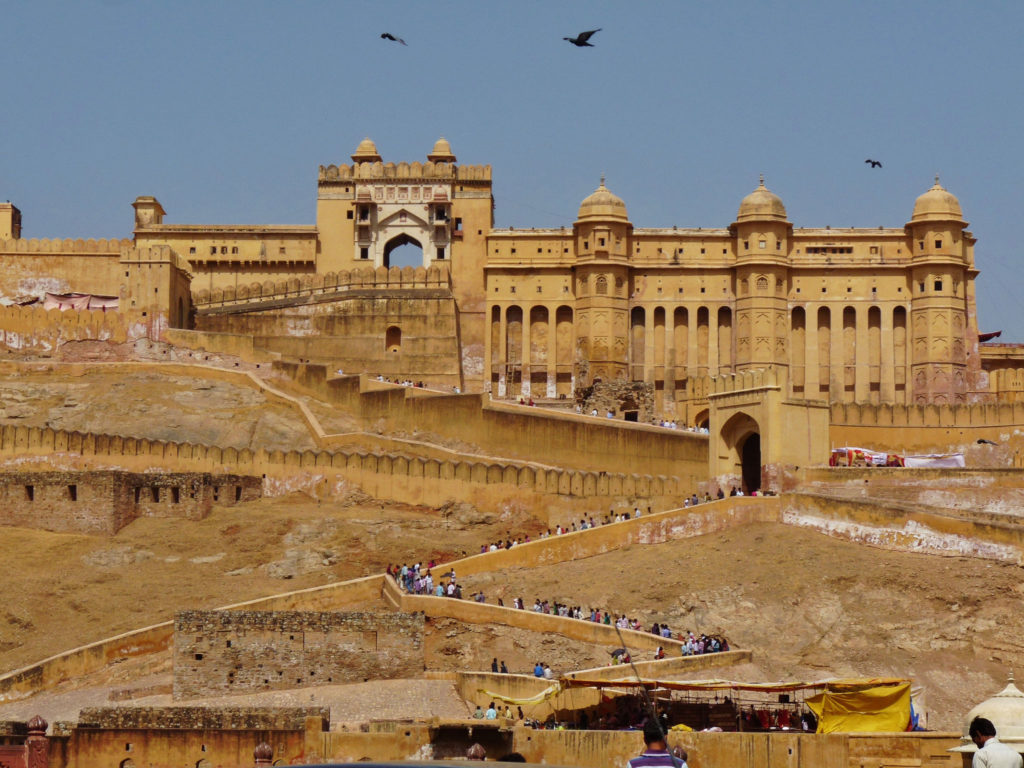
AROUND AMBER PALACE
Jagatsiromani Temple: Everywhere , they are scattered fragments and bits of Amber’s rich past. The ancient chhatris (cenotaphs), with the appearance of vaulted pavilions show some remains of paintings. Among the many temples near the Old Palace is the beautiful Jagatsiromani Temple dedicated to Lord Krishna.
The temple is inspired by Sshikhara and was built by Man Singh in memory of his son Jagat Singh. It has some sculptures and paintings and the famous black stone Krishna which is said to have been worshiped by the Bai saint-poetess Meera of Chittor. It is also famous for its carved marble entrance door guarded by stone elephants.
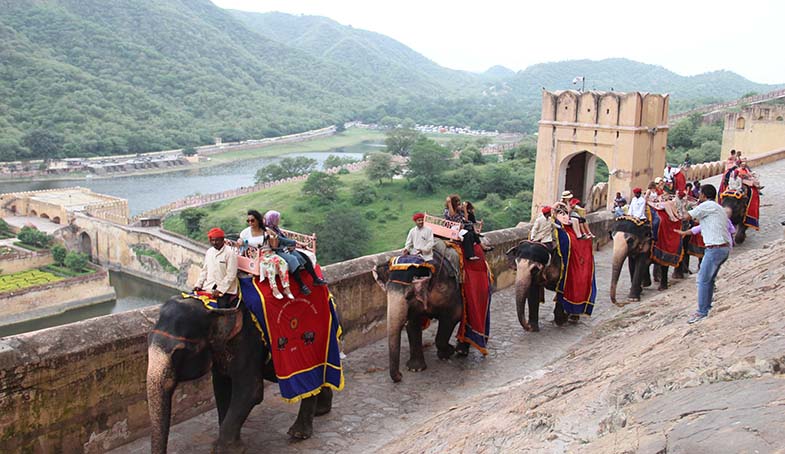
Sanwalji Temple: Across the road is the Jain Temple of Sanwalji. Nearby are the ancient Narsinghji Temple with its jhoola marble, Ambikeshwara Temple and Lakshmi Narayanji Temple. The latter has a Lingam of Shiva installed by Raja Kakil, the first Kachhawaha who ruled from Amber. It is also said that Amber takes his name from this temple.
Panna Mian ki Baoli-Stepwell: A marvel of design is the seventeenth century adorned for Panna Mian ki Baoli. Its construction was considered as an act of great generosity and benevolence. Panna Mian is a water tank that is surrounded on three sides by interlaced steps.
It also has corner octagonal kiosks and a two-story terrace. The unique and picturesque mosque in the area is here called Jami Masjid and was built in 1569 by Mal Bihar in honor of Akbar. After all, the Mughal king would need somewhere to say his prayers if he was going to visit his Rajput friends.
I hope all these notes taken from notebooks, notes and information books serve (at least summary) to help your visit, … that at least ours was exhausting because of the heat that did that day … really yes.

